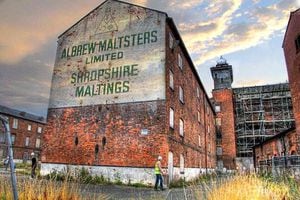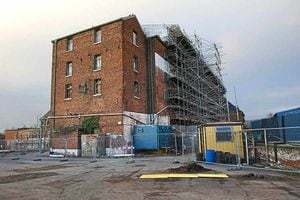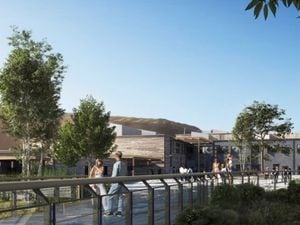Shrewsbury Flaxmill: Regeneration will go ahead as project lands extra £7.9 million
The regeneration of Shrewsbury's Flaxmill will go ahead after the project today received an extra £7.9 million in funding.

Funds have been awarded by The Heritage Lottery Fund on top of a previous grant of £12.1million, which means that work will start this year on the transformation.
The of the historic listed building is considered of global importance because it is considered a revolutionary forerunner to modern skyscrapers,
The project will see the full restoration of the Main Mill and Kiln, listed as items of international architectural importance and currently on English Heritage's "at risk register".

A cafe will be included in the development, along with an "interpretation and learning space" and four floors of commercial space.
Work on the building, which dates back to 1797, is now set to begin in spring.
Confirming the funding Ros Kerslake, chief executive of the Heritage Lottery Fund (HLF), said: "Our board of trustees agreed that Shrewsbury Flaxmill Maltings is an extraordinary part of our industrial heritage which changed the world of construction and design with its revolutionary iron frame. It is the forerunner to modern skyscrapers which define our cityscapes today.
"The site, whilst complex and made up of several highly graded listed buildings, has enormous potential. Increased construction prices and significant technical challenges have escalated costs.
"We believe that with final piece of funding from HLF, Historic England will be able to successfully deliver this important project."
Chris Smith, planning director with Historic England paid tribute to the efforts of those who have worked to get the project to this point.
He said: "It has taken a long time and enduring support from friends, Shropshire, and all funders, foremost amongst them HLF to get to this great moment. Now Historic England and allies can achieve the repair and viable re-use of one of the world's most important buildings. The Flaxmill will stand at the heart of a developing site which will bring vitality to the northern part of Shrewsbury. The repaired building and redeveloped site will become another of the many great assets of Shrewsbury and Shropshire.
One of the key groups who have worked to raise funds and increase the profile of the site is The Friends of Flaxmill Maltings, and its chairman Alan Mosley said the organisation was thrilled to reach this point.
He said: "It is tremendous news that the HLF are able to provide the additional finance to restore what is one of the most important set of buildings in Britain. The friends are proud of their role in stimulating awareness, knowledge and involvement in the project and in the success of their opening and operation of the visitor centre.
"Not only will this project restore the heritage site but there will be an enormous regenerative effect on the local and wider area.
"The success is testament to the efforts of some outstanding staff at Historic England, greatly supported by Shropshire Council and ourselves.
"Over recent years it has been hard work for the friends highly committed board and volunteers supported by our excellent part-time co-ordinator. However, it has all been more than worthwhile as our ambitions that 'the Flaxmill Maltings is brought back to life at the heart of the community' will now be fully realised."
Shropshire Council has also welcomed the funding award with spokesman Gareth Profitt saying: "Shropshire Council is committed to work in partnership with Historic England and the Friends of Flaxmill Maltings to bring this internationally important industrial heritage site back to life. The restoration of the Main Mill and Kiln is integral to the regeneration of the whole site and we are thankful that HLF has recognised the importance of the site and agreed to increase the grant offer so the next stage of works can be delivered."
The funding is to complete the second stage of the restoration of the site, with the first stage already finished.
That involved the opening of an interactive visitor centre and education facility within the office and stable buildings, funded by the European Regional Development Fund and Historic England.





